Deep Dive: Gig Workers And Digital Marketplaces

How do gig workers use digital marketplaces to find work? Do they use them to find leads? And how do they facilitate payments. The new Gig Economy Index includes a data-heavy Deep Dive that highlights the features gig workers consider the most important for digital marketplaces.
The demographic makeup of the gig economy is quickly evolving, and the digital marketplaces that help connect gig workers to employers are the tailwinds of that change. The key is to understand the value gig workers receive from such online marketplaces, and a look at our Q2 data suggests that finding qualified leads in real time is what matters.
Forty-five percent of our sample’s full-time gig workers cited getting real-time customer leads as digital marketplaces’ most valuable feature in Q2 2018, up from 37 percent in Q1 2018. This was true not only for those who make gig work their full-time occupation, but also the entities that use marketplaces to fill available gigs.
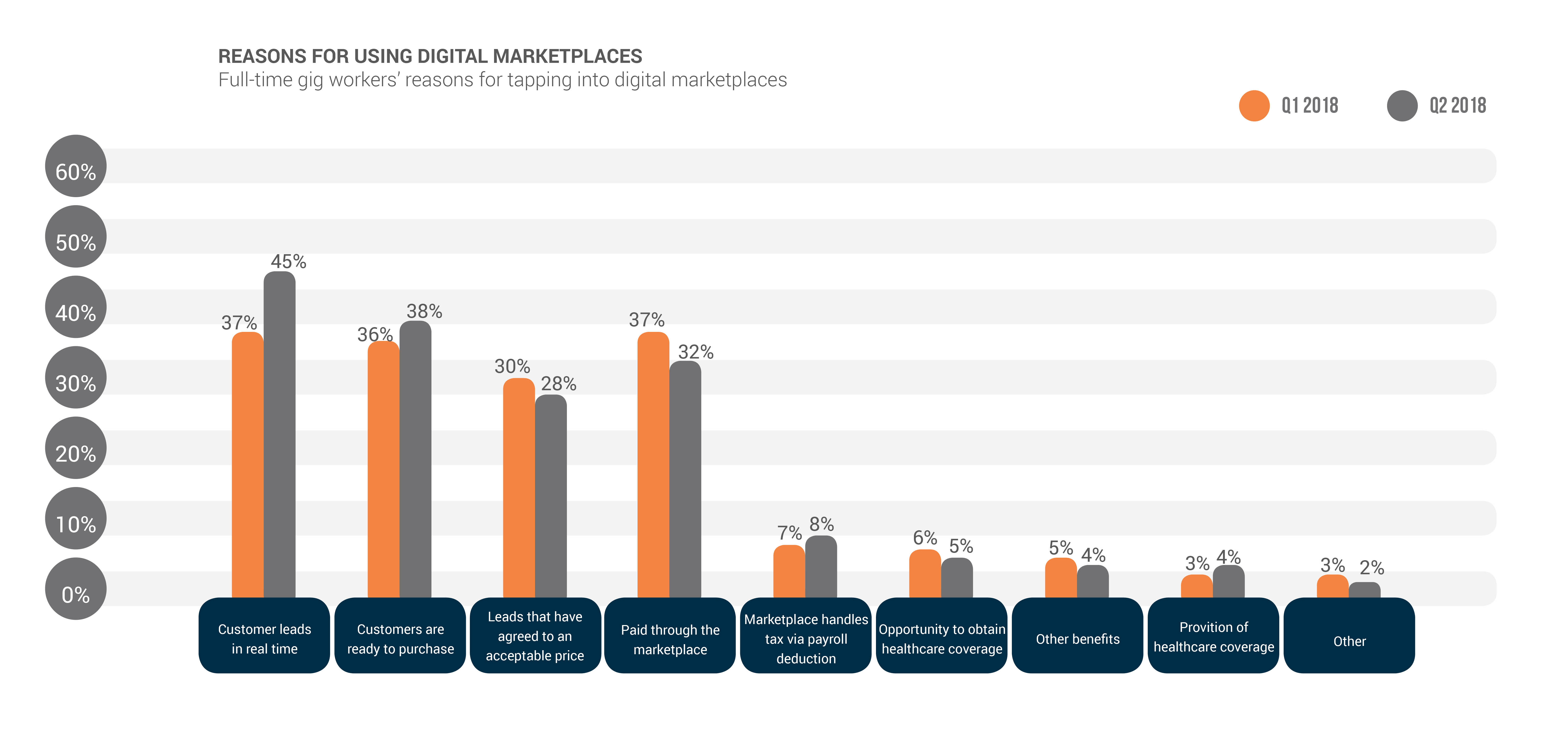
Roughly one-third of our surveyed gig workers said getting paid through a marketplace was important. That figure is down slightly from Q1 2018, and a possible reflection of the slight uptick in consumers hiring gig workers last quarter.
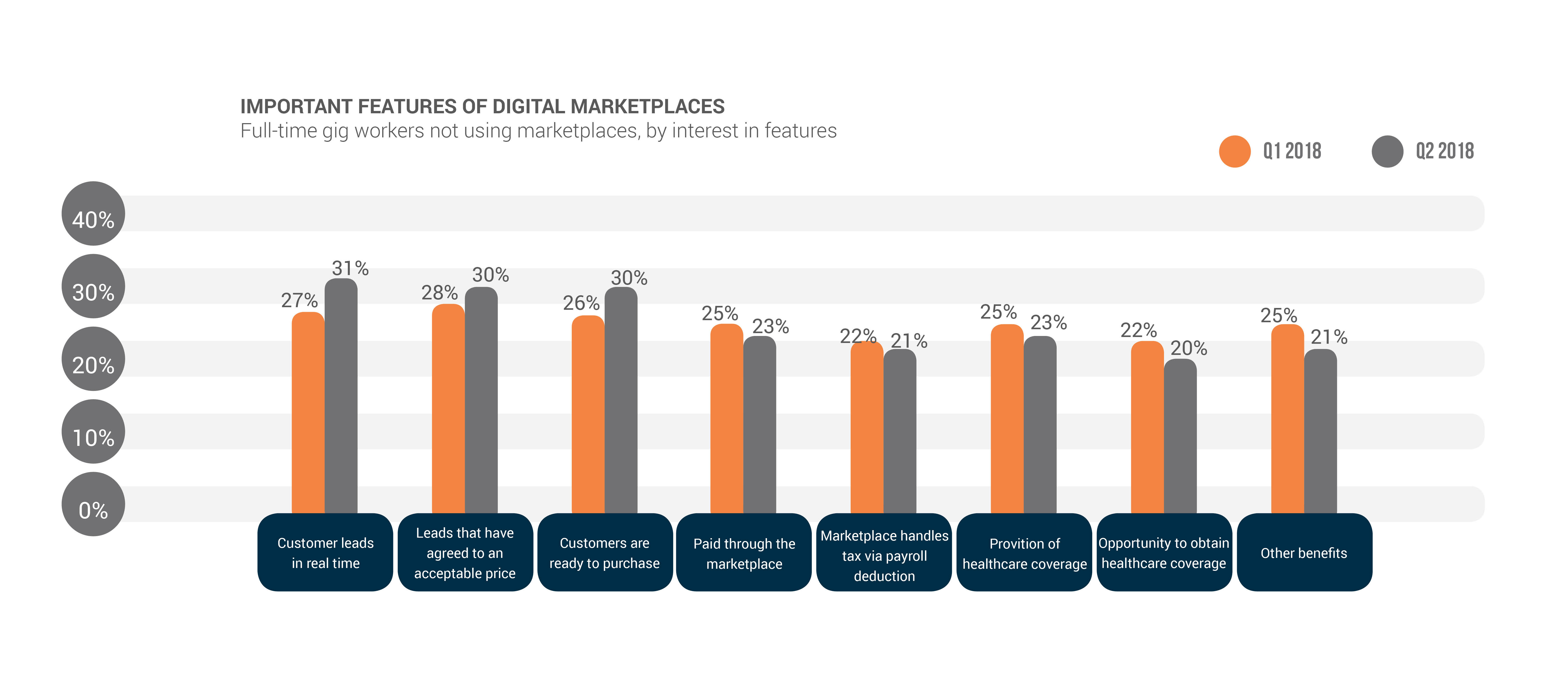
The same is true for the appeal of a marketplace that offers financial services and employee benefits. Slightly fewer workers desired healthcare coverage or help with handling their taxes. There are many reasons for this, most notably that another member of the household likely has those workplace benefits. The benefit gig workers most value and need is flexibility in earning income to support household bills.
New Gig Workforce, New Gig Marketplace Priorities
Digital marketplaces’ importance appears correlated to the type of work performed and, unsurprisingly, whether gig workers work full time in the gig economy or use platforms to find opportunities outside their full-time employment. They’re critical for the former.
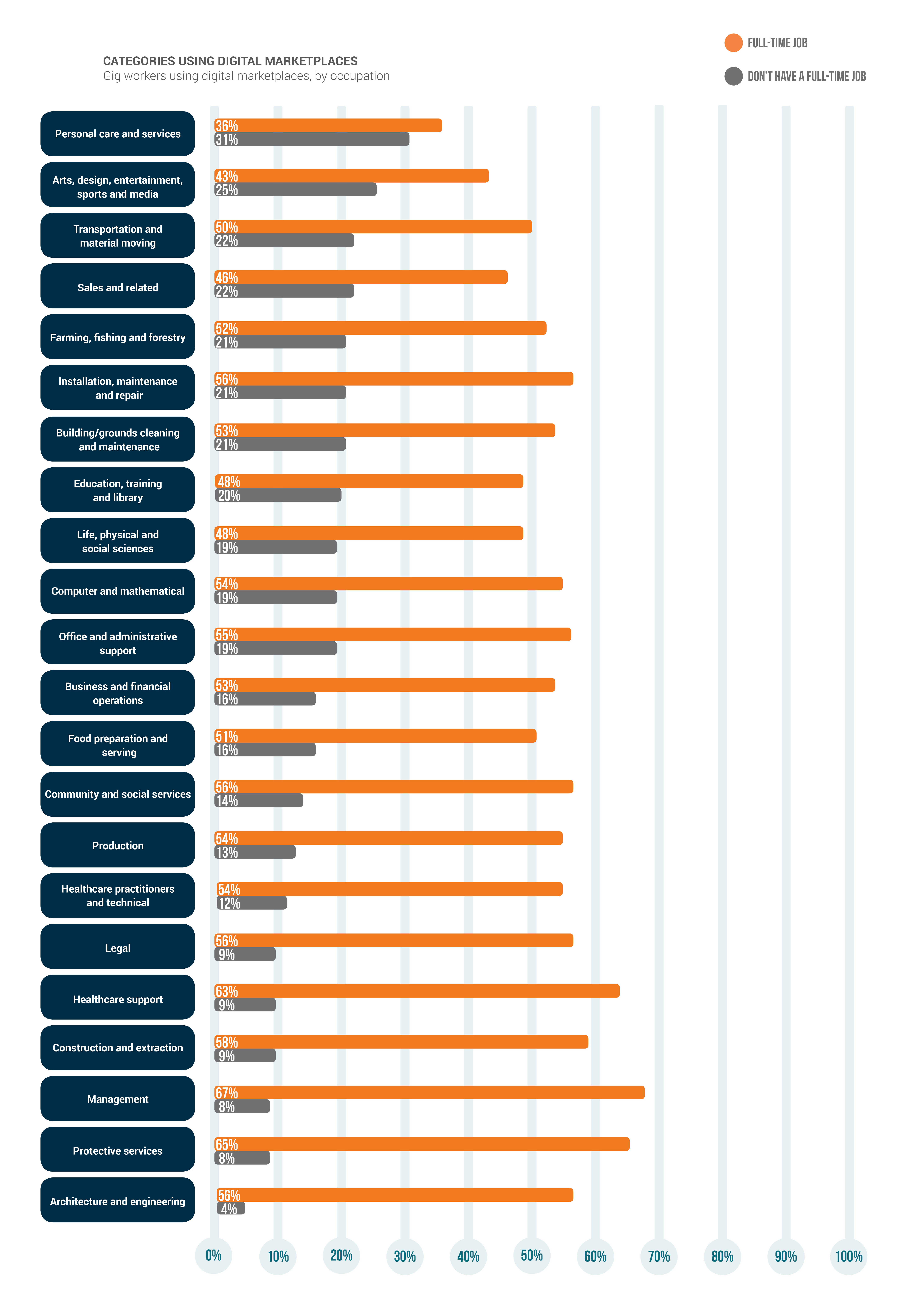
Their importance is also indicative of these marketplaces’ verticalization. The highest share of full- time gig workers who consider digital marketplaces essential are employed in the personal care and services sector, including nurses, physical therapists and chiropractors. The same holds true for those in the arts, design, entertainment, sports and media professions, or those in transportation, delivery and sales-related jobs — all of whom use marketplaces that give buyers access to a more skill-specific pool of workers.
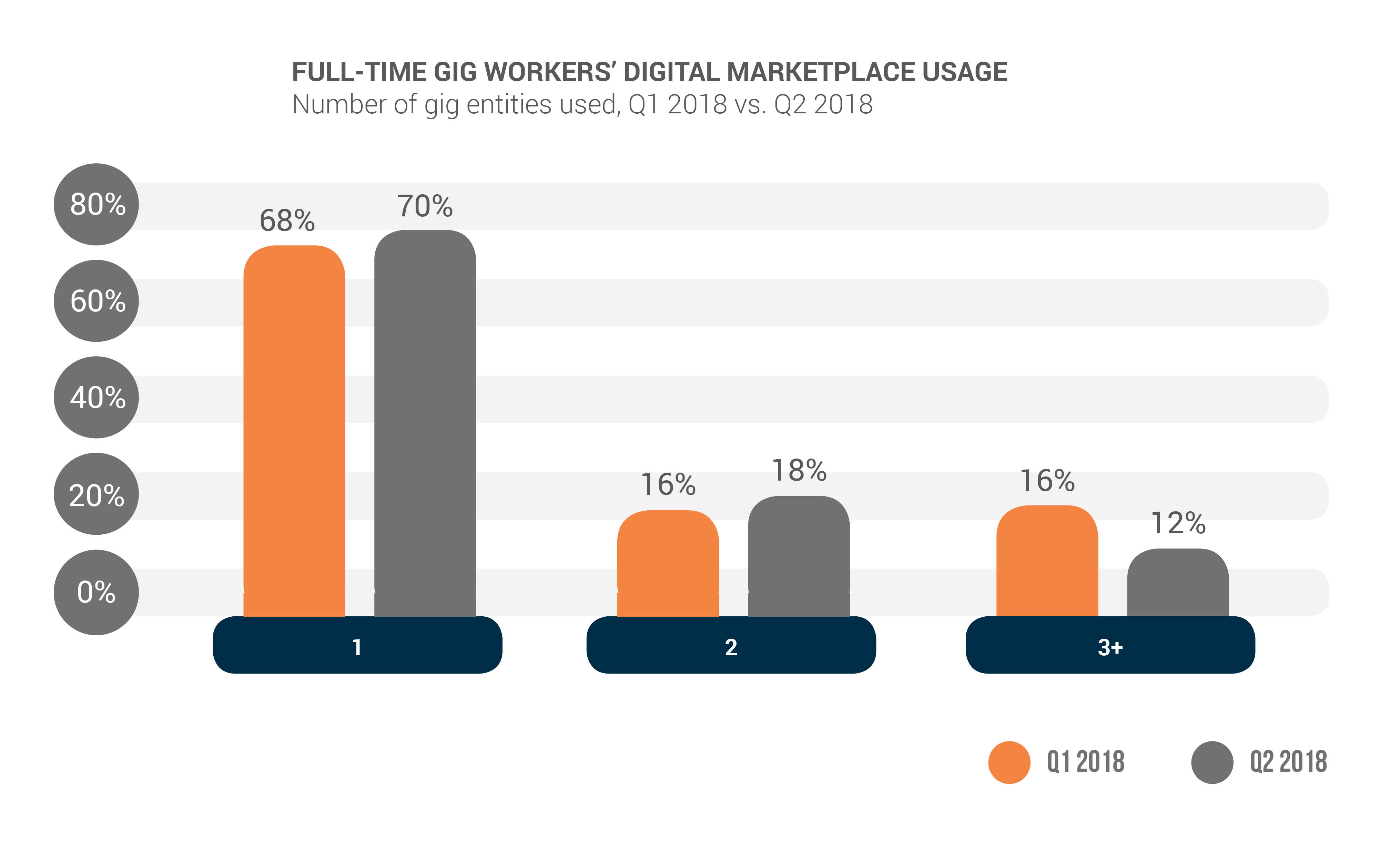 They may be using fewer digital marketplaces, but gig workers both with and without regular jobs are highly active on at least one marketplace.
They may be using fewer digital marketplaces, but gig workers both with and without regular jobs are highly active on at least one marketplace.
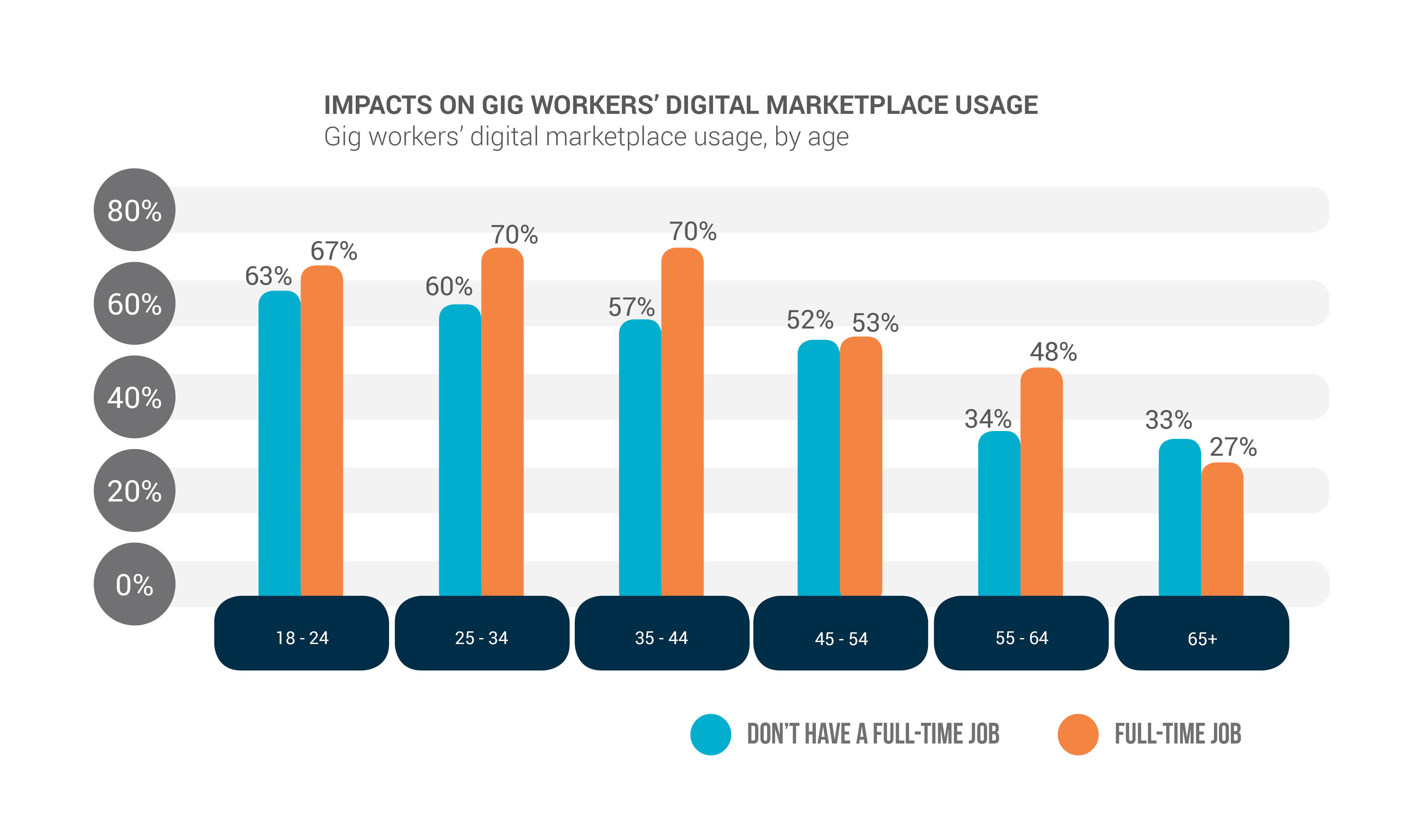
Digital marketplace usage is also strongly correlated to age. As the figure above shows, those aged 44 and younger are more likely to use marketplaces than those over 55. The highest share without a regular job and using marketplaces is between ages 18 and 24 years old.
As gig workers with regular, full- time jobs get older, their usage of such marketplaces appears to decline. PYMNTS found that 33 percent of those aged 55 to 64 who do not have a regular job are using one compared to 27 percent with a regular full-time job.
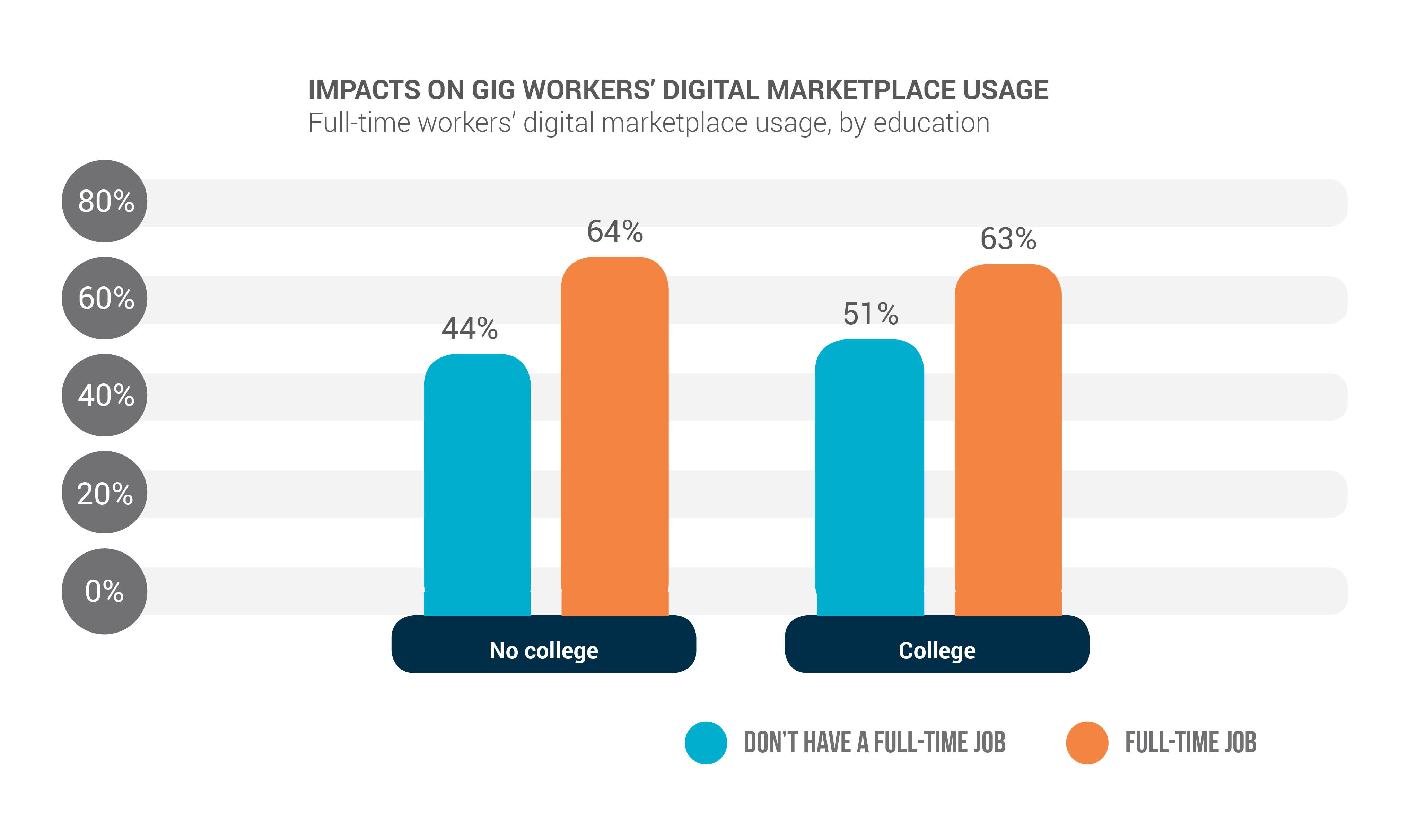 Digital marketplaces see higher usage among those without a regular job, regardless of college education levels. This indicates that education is not necessarily a significant factor determining whether a gig worker turns to a digital marketplace to source gigs.
Digital marketplaces see higher usage among those without a regular job, regardless of college education levels. This indicates that education is not necessarily a significant factor determining whether a gig worker turns to a digital marketplace to source gigs.
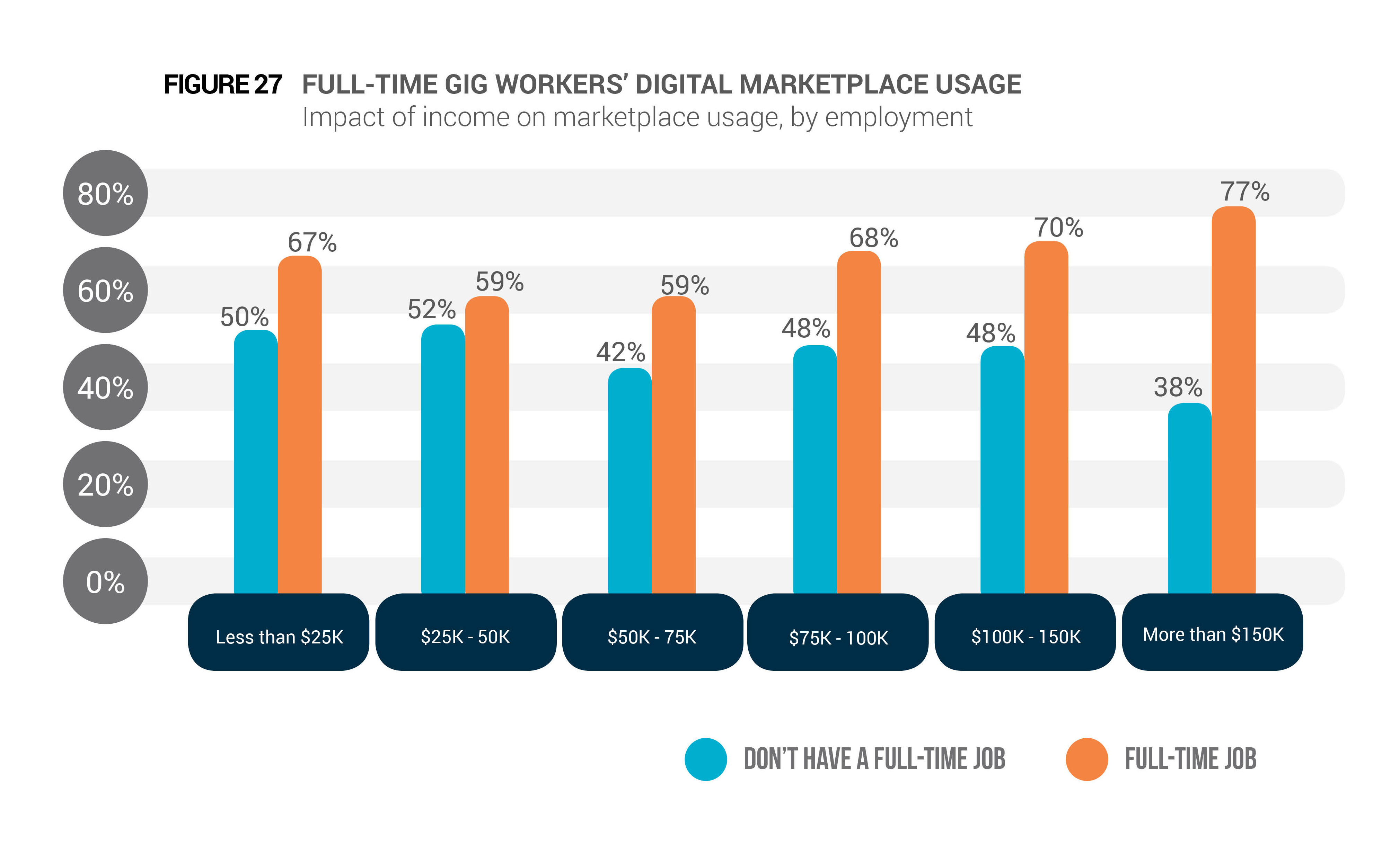
Gig workers’ education levels might not move the marketplace usage needle, but income is another story. A look at the figure above shows how usage varies by gig worker type. As personal income levels increase among those with regular full-time jobs, so, too, does digital marketplace usage, according to our data.
On the other hand, usage decreases for gig workers without full-time jobs as their income levels grow. Gig workers with regular full-time jobs and earning more than $150,000 per year are twice as likely to use digital marketplaces as those without regular, full- time jobs.
This indicates that access to digital marketplaces is more important to full-time gig workers who earn less. A large share of these are younger, likely making them more dependent on such platforms to find gig assignments earlier in their careers. Older full-time gig workers earning more than $150,000 per year are more likely to have established themselves in their respective fields and secured return clients, allowing them to be less dependent on marketplaces for work-related leads.
How Full-Time Gig Workers Get Paid
In terms of how full-time gig workers are compensated through digital marketplaces, one method holds a clear lead: PayPal. Fifty-one percent of full-time gig workers identified PayPal as the primary way they were paid for their services, followed by direct deposit. Physical payment methods — cash, checks and credit cards — ranked lowest.
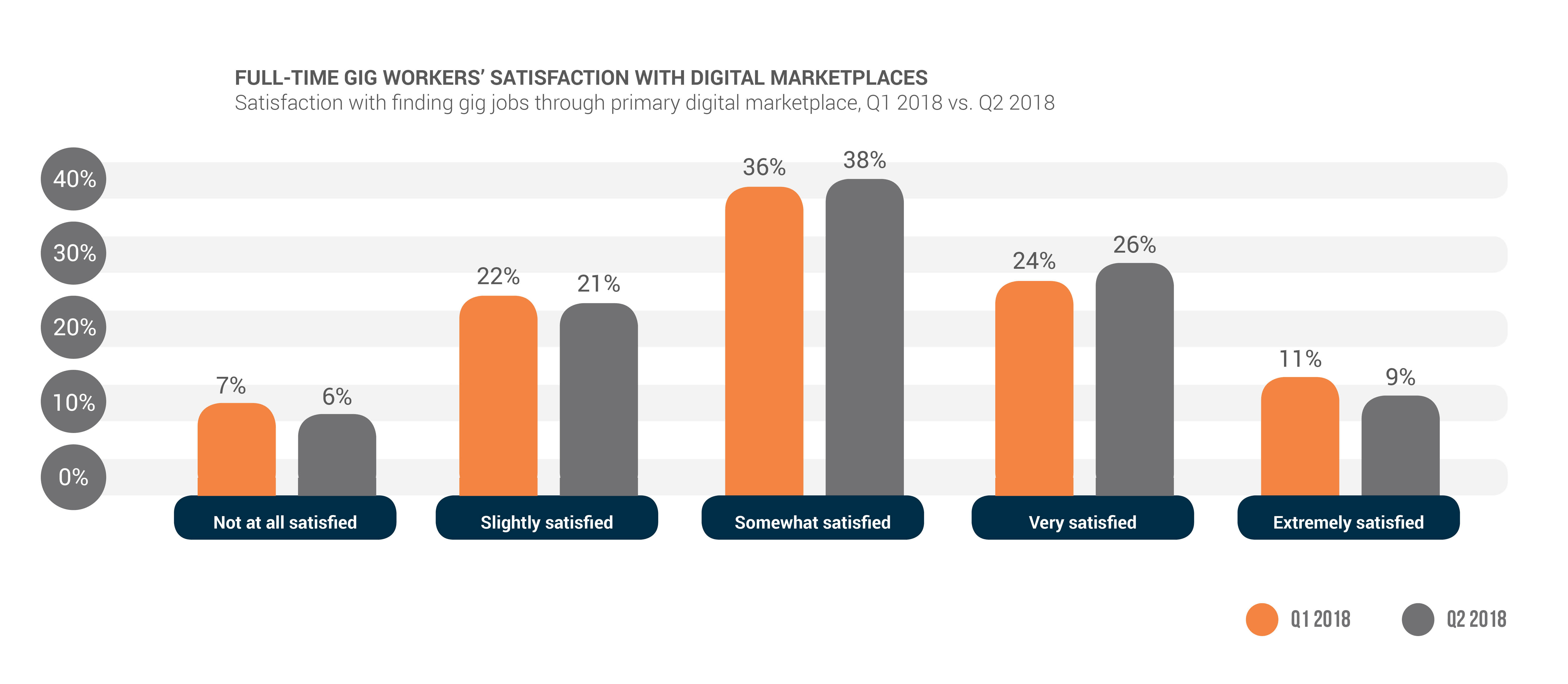
Satisfaction levels with these platforms have largely gone unchanged since Q1 2018. The largest share of gig workers without a regular job said they were “somewhat satisfied” with their digital marketplace payments experiences.
That said, we saw an interesting trend emerge when we looked at workers’ satisfaction with payment methods as a function of their affinity for the gig lifestyle. Eighty- four percent who like their lifestyle and plan to pursue jobs in the gig economy were “very” or “extremely” satisfied with their payment methods, up slightly from 82 percent in Q1.
Gig workers’ satisfaction with how they are paid seems tied to whether they are engaged in ad-hoc jobs that match their skill sets. Seventy-five percent of those who worked gigs requiring very specific skills reported being “very” or “extremely” satisfied with how they were paid this quarter. In comparison, just 60 percent who worked gigs requiring “somewhat specific” skills reported being as satisfied with their payment methods.
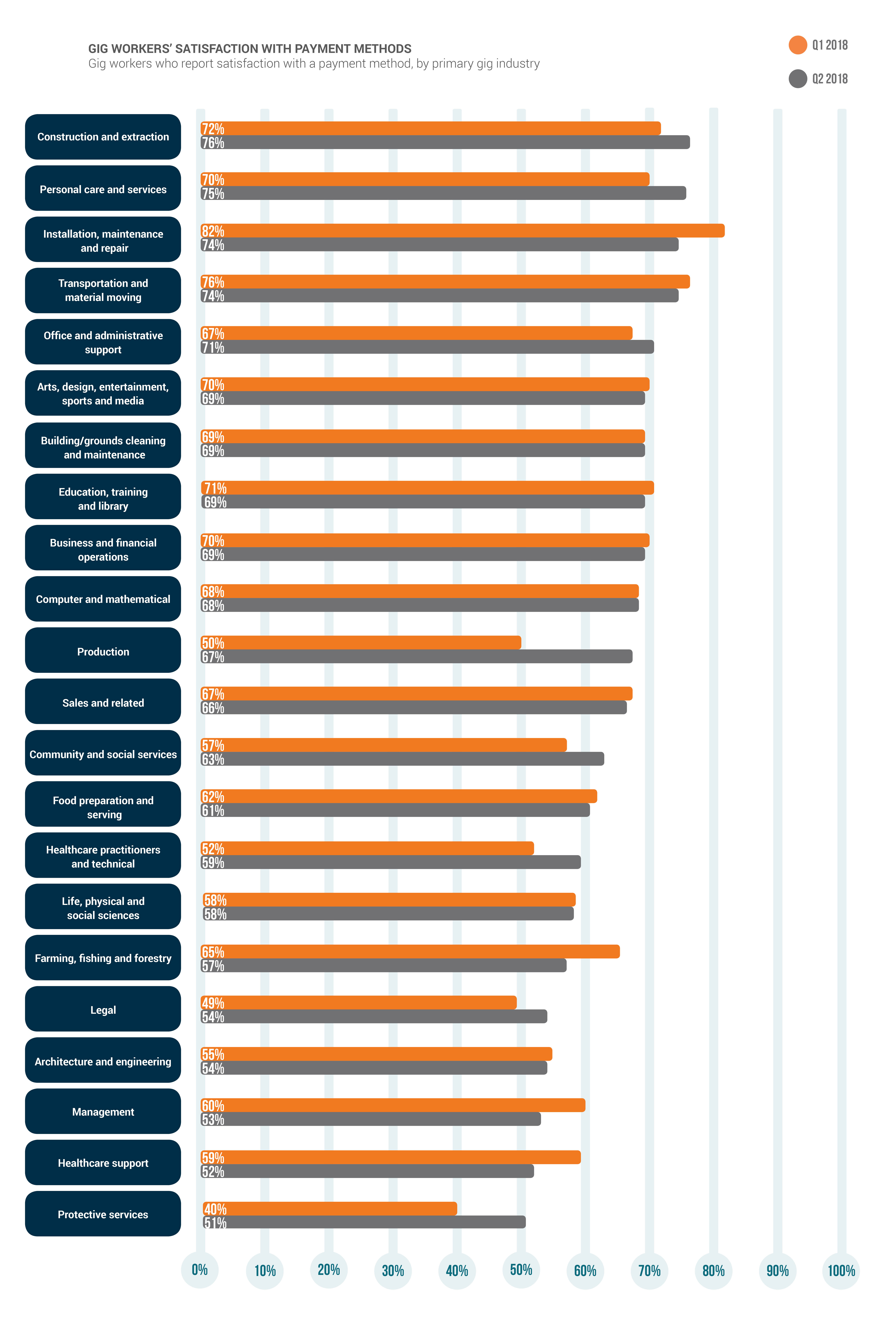
On a broader level, gig workers’ satisfaction with payment methods also tends to vary by profession. Workers in the installation, maintenance and repair industry were more satisfied with how they were paid than workers in other professions, for example. Eighty-two percent of these gig workers reported being “very” or “extremely” satisfied in Q2 2018, up from 74 percent in Q1.
Workers in the installation, maintenance and repair industry report high satisfaction with their payment methods, a likely result of Amazon Home Services, Handy, TaskRabbit and similar offerings’ recent proliferation. These have not only made it easy for consumers to find help, but also for gig workers to find jobs that match their skill sets — and get paid instantly.
Find more than 500 data points — based on insights from nearly 10,000 gig workers on the forces shaping the gig economy — in the new Gig Economy Index™.
About The Index™
The Gig Economy Index™, a Hyperwallet collaboration, is designed to better understand workers in the gig economy, people who often work in short-term, ad hoc positions — who they are, what services they supply and what percentage of their overall income that gigs represent.
The Index™ features a survey of nearly 10,000 people who have participated in the gig economy in the past year. The Index™ further breaks down details such as age, gender, race, income, education, time spent in the gig economy and payment mechanisms.
